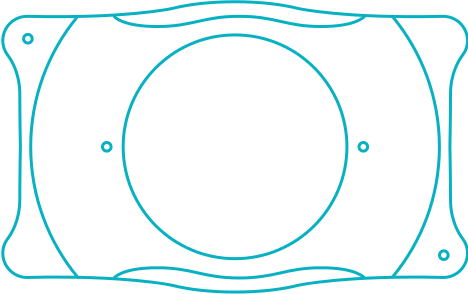
If you do not qualify for LASIK to correct your nearsightedness, there is still hope! Individuals with moderate to severe myopia may opt to have phakic intraocular lenses surgically implanted inside their eyes. These lenses offer a permanent and highly effective solution to your nearsightedness, with results rivaling and sometimes even surpassing that of LASIK.
What are Phakic Intraocular Lenses?

A Phakic Intraocular Lens Inside the Eye
The insertion of phakic IOLs requires a surgical operation akin to that of cataract surgery. Unlike contact lenses, you can’t feel the phakic intraocular lens in your eye and they don’t require any maintenance. Once they are in place, you won’t have to worry about them getting dirty or dislodged.
Phakic IOLs can correct for nearsightedness in ranges between -3.00 to -20.00 diopters. In addition, new toric phakic IOLs have been approved by the FDA, allowing for astigmatism to be corrected in addition to nearsightedness.
Phakic IOLs versus LASIK
LASIK is the most popular form of vision correction surgery in the United States today. However, not everyone qualifies for the procedure. Individuals with extreme levels of myopia or astigmatism, irregularly shaped or thin corneas, or other eye diseases may be ineligible. Phakic IOLs offer an alternative approach that is just as effective as LASIK for these individuals.
EVO Visian ICL
Dr. Rex Hamilton makes use of the EVO Visian ICL, also known as the Implantable Collamer® Lens. These lenses are designed to be placed behind the iris, making them near invisible without a microscope. The lens itself is made of a flexible, biocompatible material and can easily be folded and unfolded, meaning that only a small surgical incision is required for insertion and orientation.
